Content
- 1 Why does the pot get dirty?
- 2 How to clean the pan from soot and burnt fat at home
- 2.1 Handy cleaning products inside and out
- 2.1.1 Soda and table salt
- 2.1.2 Cleaning pots with salt
- 2.1.3 We use vinegar
- 2.2 How to clean the pan from soot with household chemicals
- 2.3 How to quickly clean an old pan from fat
- 2.4 How to remove browning on a pan
- 2.5 How to clean heavily smoked sides and bottom of a pot
- 2.1 Handy cleaning products inside and out
- 3 Features of cleaning pans from different materials
- 3.1 stainless steel
- 3.2 Enamelware
- 3.3 Aluminum saucepan
- 3.4 Teflon coated saucepan
- 4 How to properly clean pots and restore their original shine
- 5 Dish care and fire prevention
- 6 VIDEO: How to effectively clean the pans from soot and fat.
Why does the pot get dirty?
As a result of operation, drops of fat and oil fall on the front side of the pan. This happens when frying food on adjacent burners, boiling liquid out of dishes, moving food from one container to another, when washing. During the heating process, these fat droplets undergo chemical changes with the formation of volatile and non-volatile degradation products. Most non-volatile. They are polymers of triglycerides. They increase the viscosity of the oil, resemble resin, and can burn. Their ability to be dissolved by detergents is lower than that of the original fats. Not removed in time, they harden and accumulate.
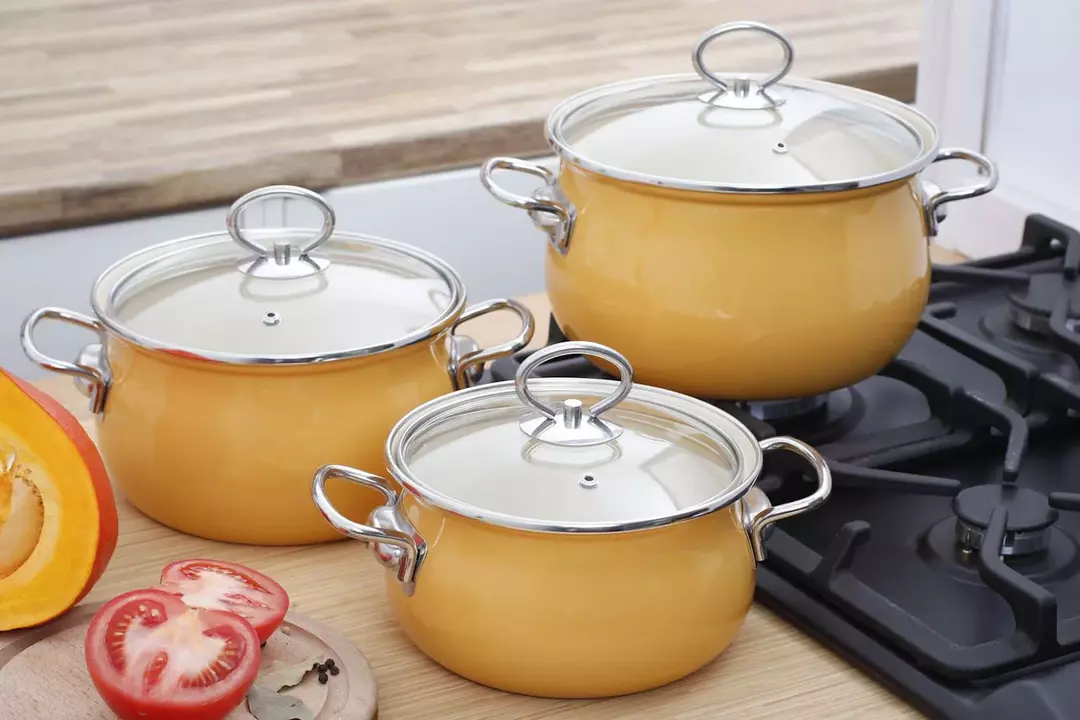
Beautiful and high-quality pots in the kitchen are the dream of housewives and the guarantee of delicious dishes.
How to clean the pan from soot and burnt fat at home
This is feasible - to clean the formed soot with improvised chemically active substances present in any kitchen), applying mechanical efforts. This should be done regularly, at the first sign of contamination. Cleaning is carried out taking into account the material of the pan and the level of complexity of contamination. There are methods for the mechanical removal of old fat: using sandblasting, grinding, roasting, freezing in a freezer.
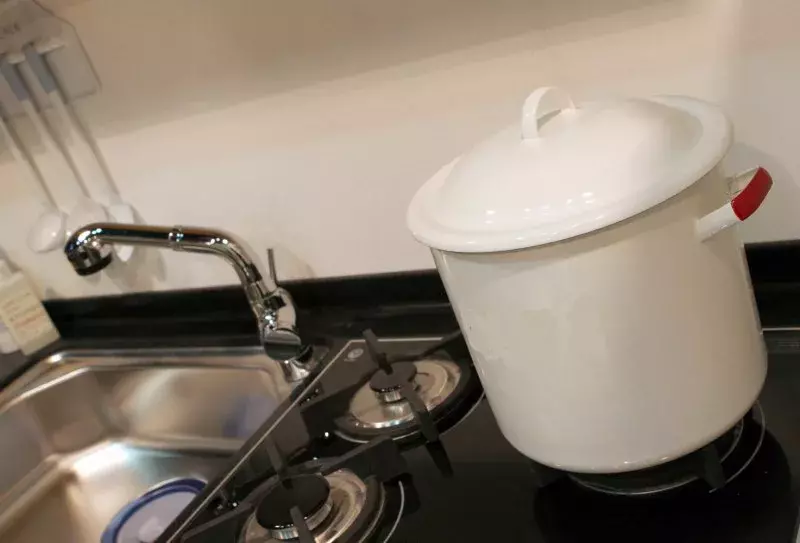
What modern manufacturers just do not offer - different shapes, volumes, materials.
Handy cleaning products inside and out
There are a lot of chemically active substances that can destroy burnt fat at home.
- You can use soda.
- Use baking powder for dough.
- Wash off with rock salt.
- Activated charcoal.
- Boil with laundry soap.
- Wipe with thick coffee.
- Clean with mustard powder.
- Take vinegar.
- Rub the surface with apple peel.
- Use citric acid.
- Lemon juice.
- Use ammonia.
- Ferry.
- Wash with household chemicals.
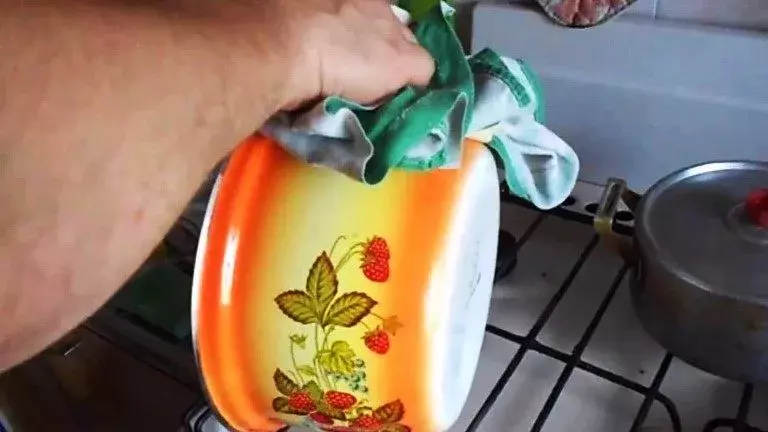
Any pan during operation will accumulate soot on itself.
Soda and table salt
Sodium bicarbonate (commonly called soda) has the characteristics of a strong base, easily interacts with acids (decomposition products of burnt fats).
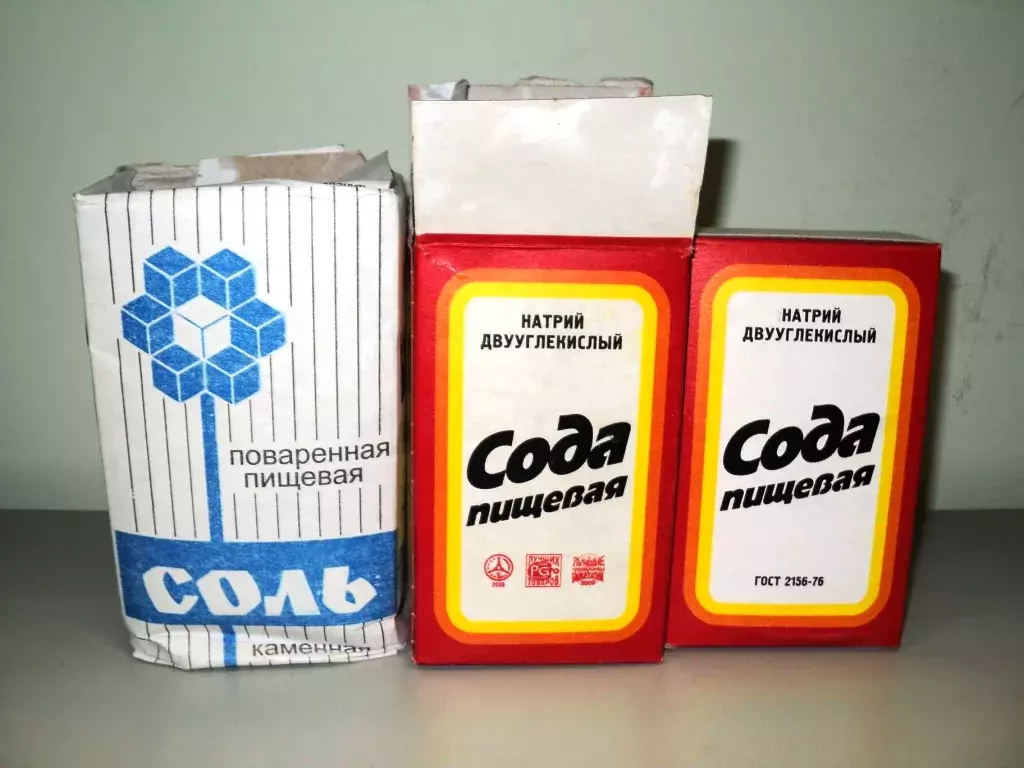
In collaboration with baking soda, salt acquires strong cleansing abilities.
There are types of soda:
- Food less active (ph8), more common
- Calcined (linen), more aggressive than food (ph11), precautions are necessary during use, used for complex contamination
Important! Its use is absolutely harmless to human health.
Considering the scale of contamination, the contact time of soda with fat lasts from 30 minutes to 12 hours.
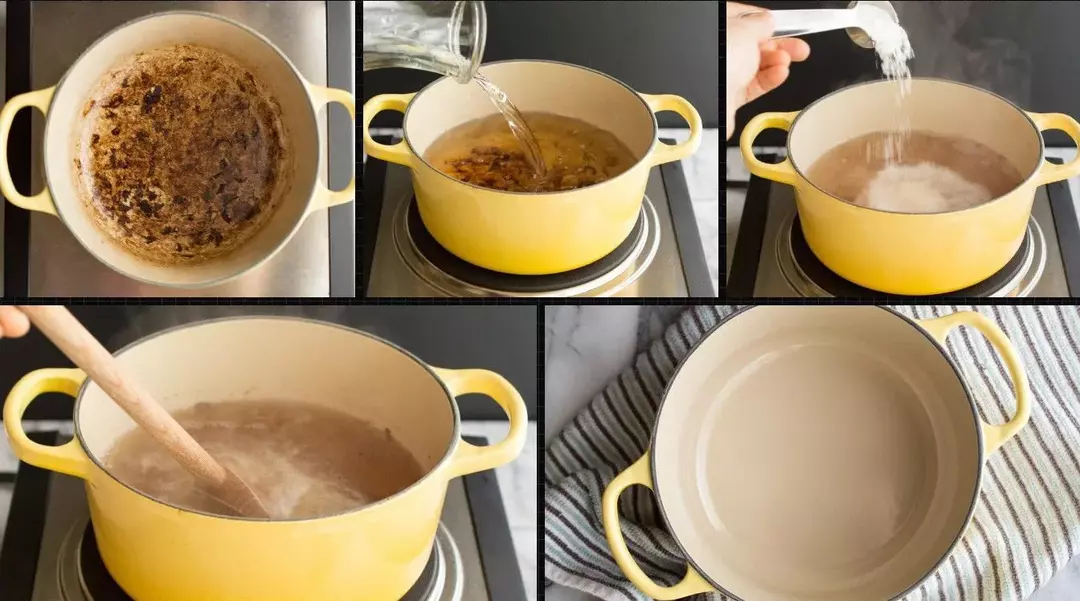
Salt is able to remove strong contamination, and also allows you to do preventive cleaning of dishes.
Important! Effectively removes the most stubborn stains.
Application options:
- Boiling dishes, pouring this substance into the solution.
Stages:
- A bowl of water is placed on the gas stove, larger than the pan being cleaned.
- In it, stirring constantly, soda is dissolved (calculation: 70 g per 1 liter of liquid), brought to a boil.
- The dishes to be cleaned are placed in the container, it is cooked from half an hour to one and a half hours.
- After turning off the fire, it is necessary to wait until the temperature of the solution drops, remove the cleaning object, rinse it with water.
- Be sure to clean the container after performing all operations.
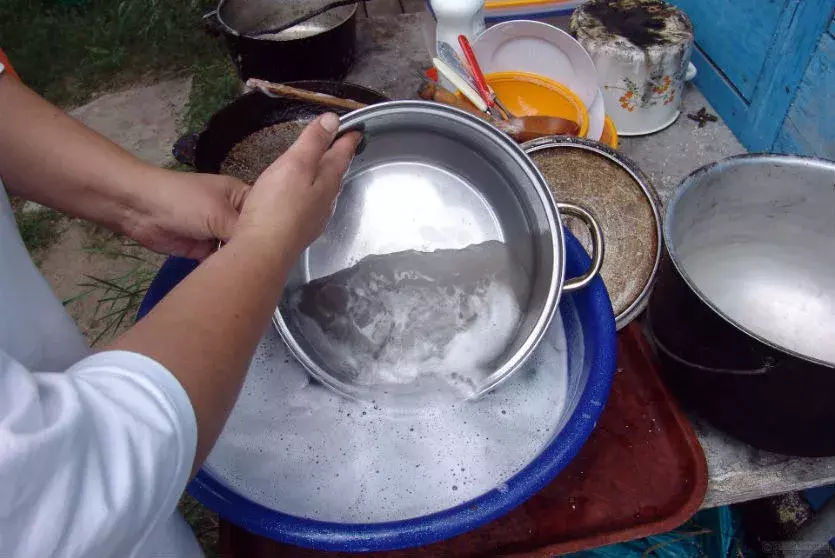
Table salt helps with light pollution.
Important! The necessary re-cleaning is carried out by increasing the amount of bicarbonate to 80 g per previous volume.
- Soda is added to water until the density of sour cream, gruel is applied to the burnt surface and left for several hours, then washed off under the tap.
- The effectiveness of soda increases when substances are added to its solution with which it actively interacts chemically.
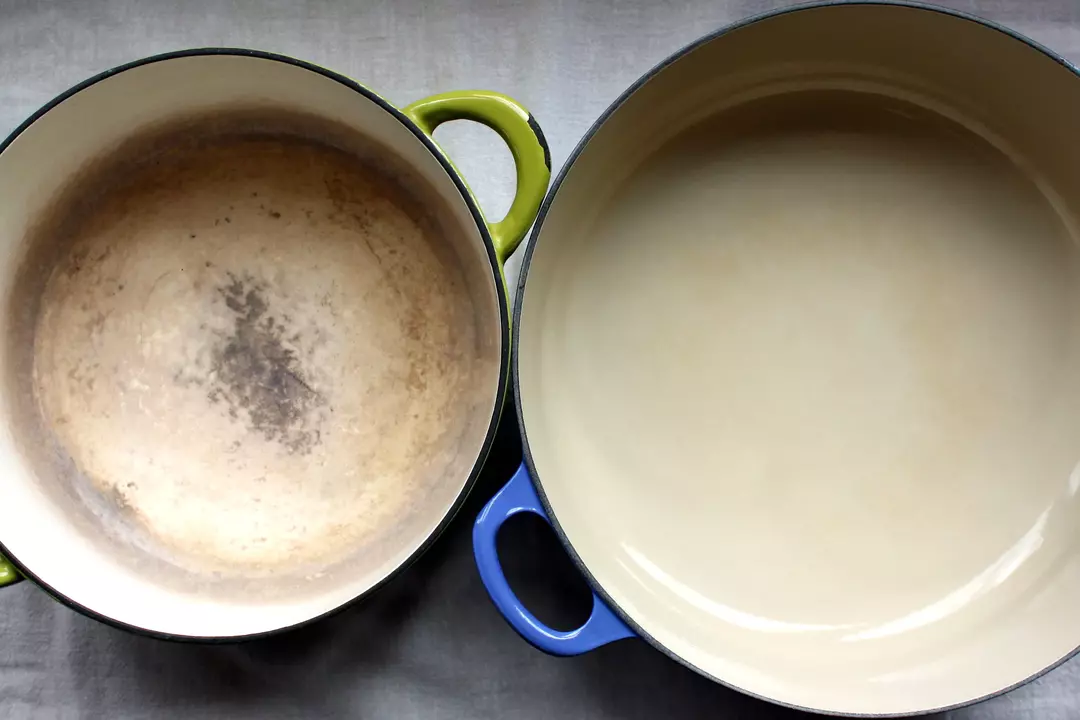
Drain the liquid, allow the dishes to cool and wash them with a sponge and dishwashing detergent.
Some of them:
- Vinegar: 9% is needed, the proportion of the ratio with soda is 1: 1.
- Hydrogen peroxide (2 tbsp): in addition to bicarbonate (half a glass), a detergent (25 g) is added.
- Citric acid: ratio 1:1, harmless than acetic acid.
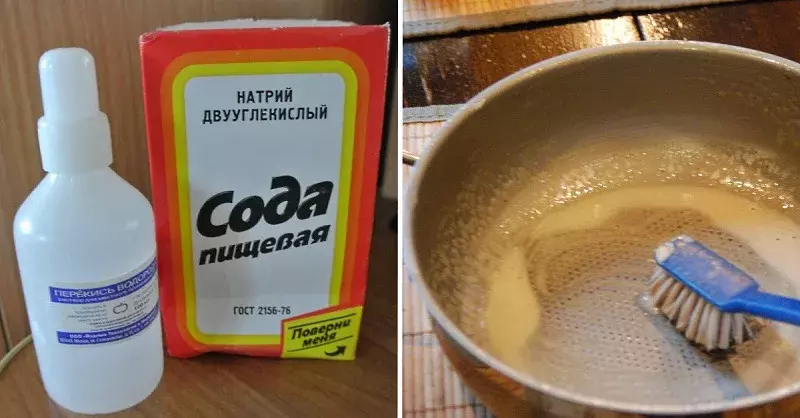
With the help of vinegar, you can get rid of plaque without boiling.
Cleaning pots with salt
Salt has excellent abrasive qualities and does not harm human health.

This tip on how to clean the pan from soot involves rubbing the surfaces of the dishes with salt, and this cannot be done with enameled objects.
First cleaning step:
- At the bottom, the walls of the pan, pour a few pinches of this substance.
- A few drops of cleaning agent are applied to the sponge.
- The soot area must be intensively rubbed.
- Rinse the mixture of salt and detergent from the dishes with a stream of running water.
The second cleaning method: It is necessary to boil the dishes in a cool salt solution (1 hour).
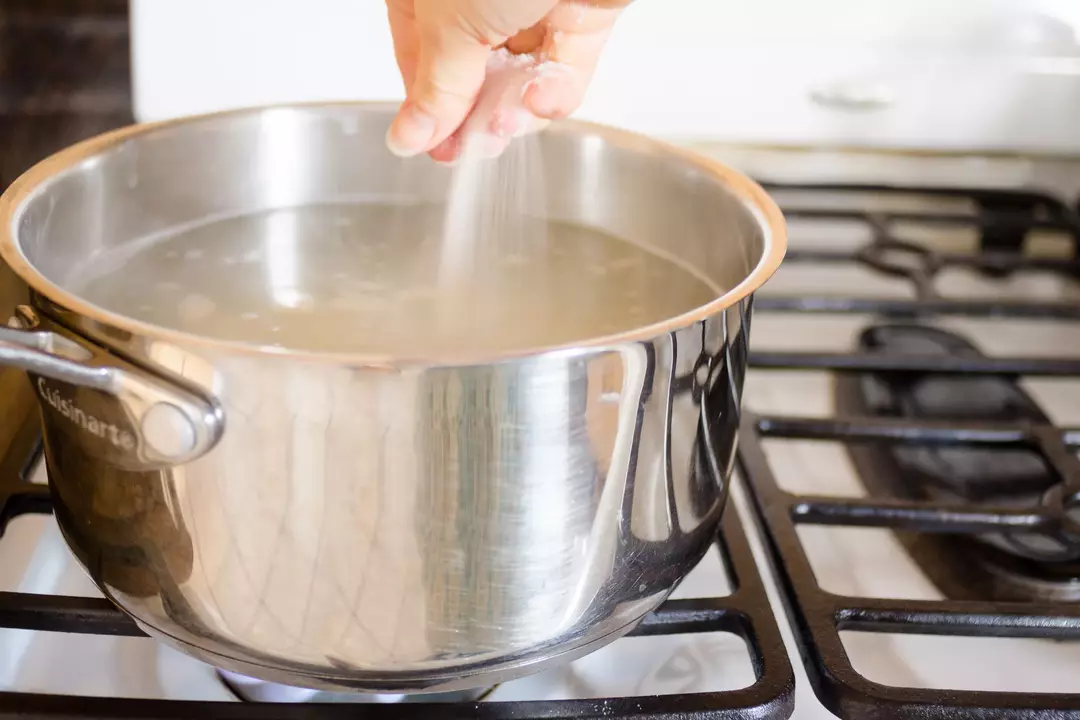
After the process is completed, cool the dishes and rinse with a sponge with gel.
We use activated carbon:
- you will need 3-4 tablets of activated charcoal;
- they are crushed with a teaspoon to a powder state;
- the powder is poured onto the burnt area;
- waiting for half an hour;
- pour in cool water, wait 30 minutes;
- wash with any dish detergent.
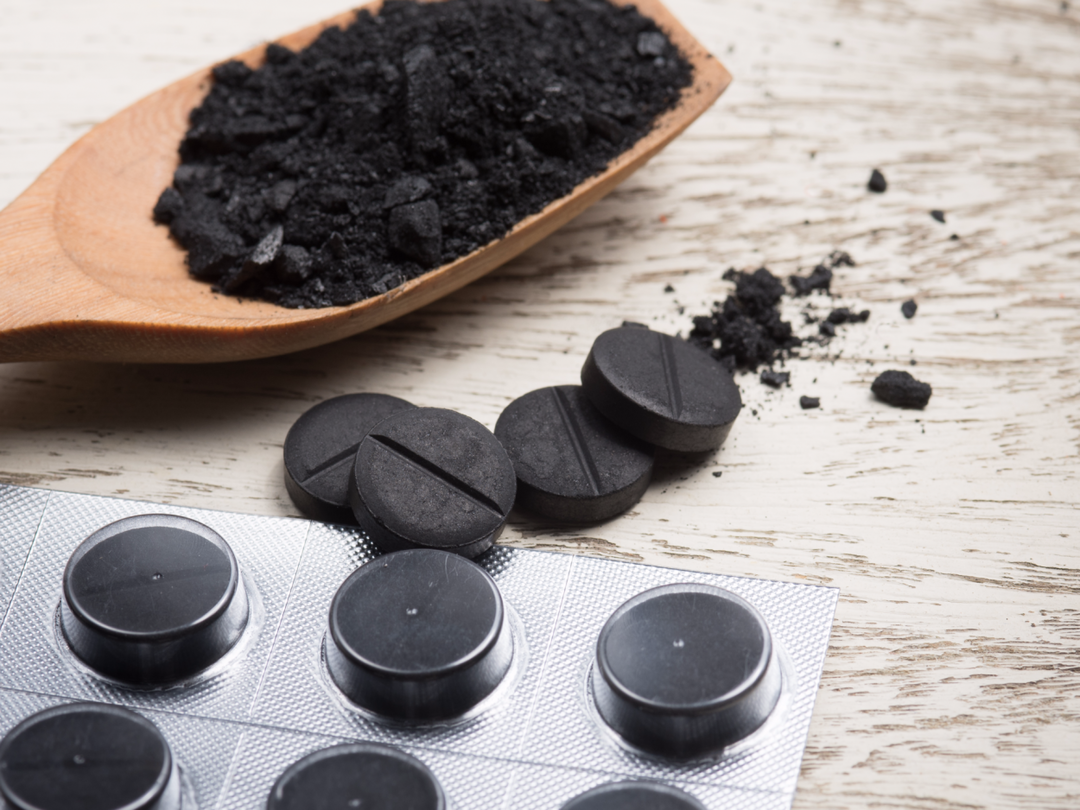
Charcoal is the easiest way to get rid of burnt milk or other food.
Laundry soap solution:
- half a bar of soap is rubbed using a grater, dissolved in water;
- the dishes are boiled in this liquid for 20-40 minutes;
- either heated to a temperature below 100 degrees and soaked for a couple of hours;
- the remains of the soap solution are washed off with water.
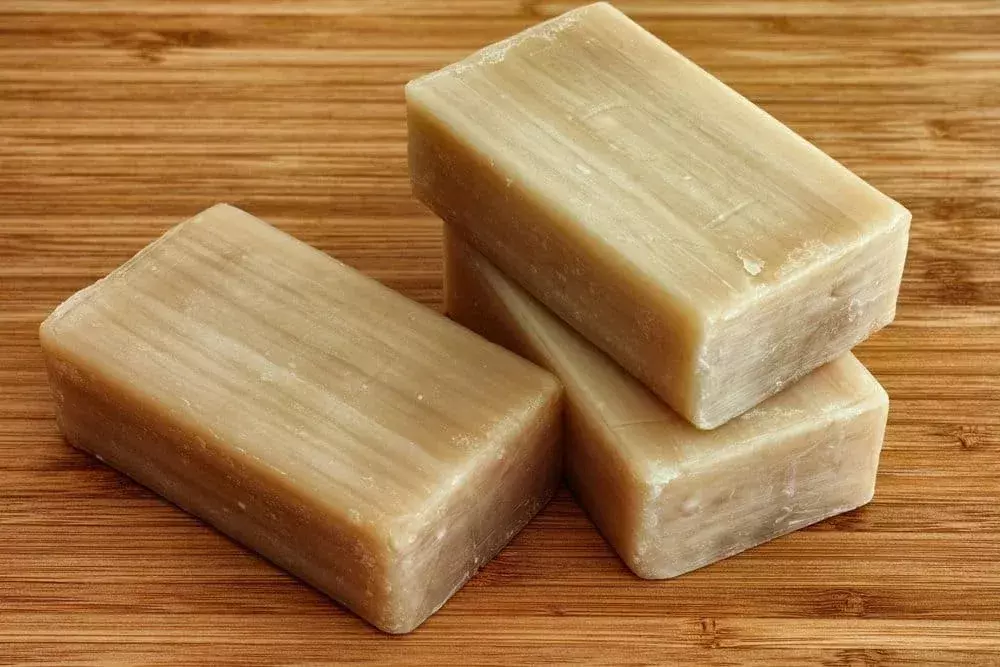
In case of light, fresh soiling, laundry soap can be used.
Important! Suitable for people with an allergic reaction to soda.
We use vinegar
Acetic essence is cheap, non-toxic, environmentally friendly, absolutely natural.
Great advantage! It is able to destroy, in addition to soot, rust, lime deposits, scale.
Application method:
- mix with water in a ratio of 1 part 9% vinegar: 3 parts water;
- poured into a container, boiled for 3-4 hours;
- dishes are easily cleaned of burnt fat.
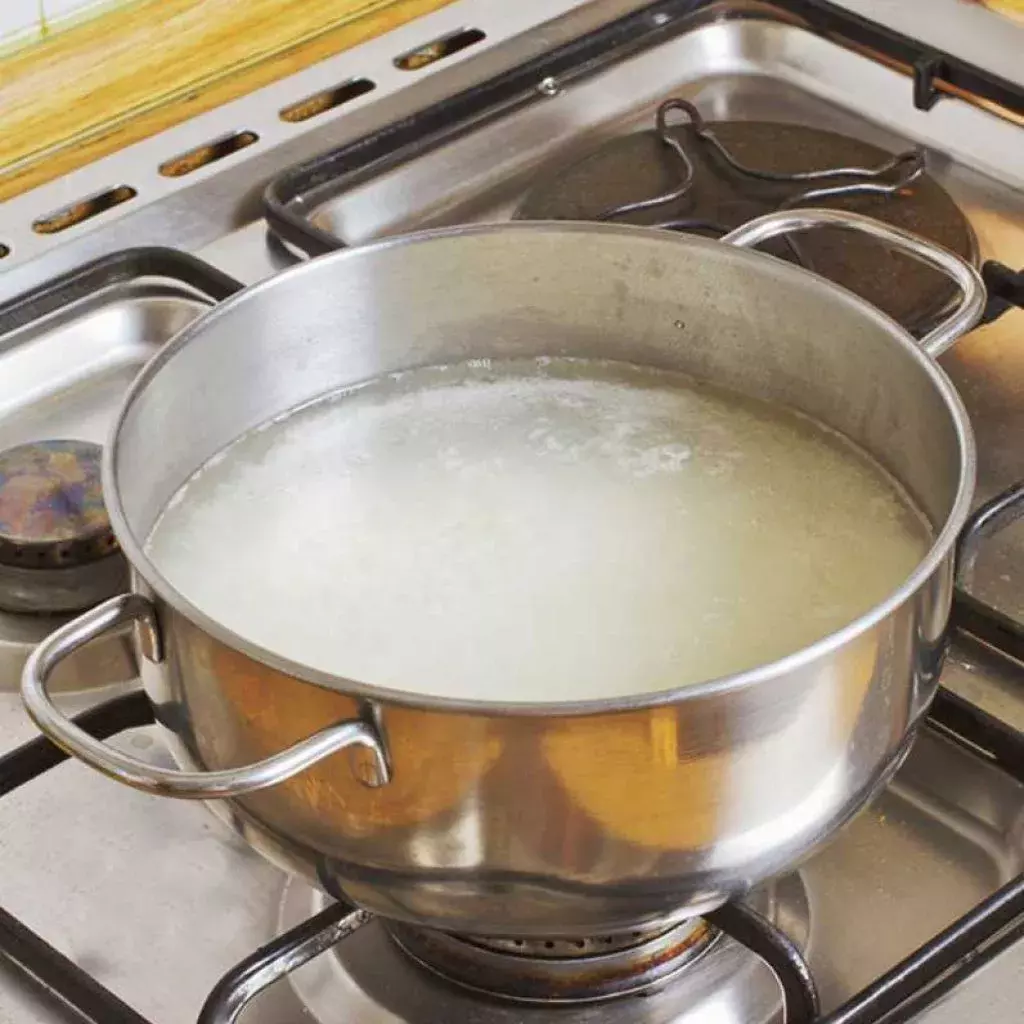
Then you can rinse the dishes with plain water and a sponge.
Important! Boiling is carried out in a ventilated room, in order to avoid burns of the respiratory organs with the fumes of this acid.
Cleaning with citric acid:
- dissolve a bag of this acid in a mug of water (200-250 ml);
- utensils must be boiled in this solution for 1 hour;
- pour out the special solution, clean the cinder with a sponge;
- residual substances are thoroughly washed.
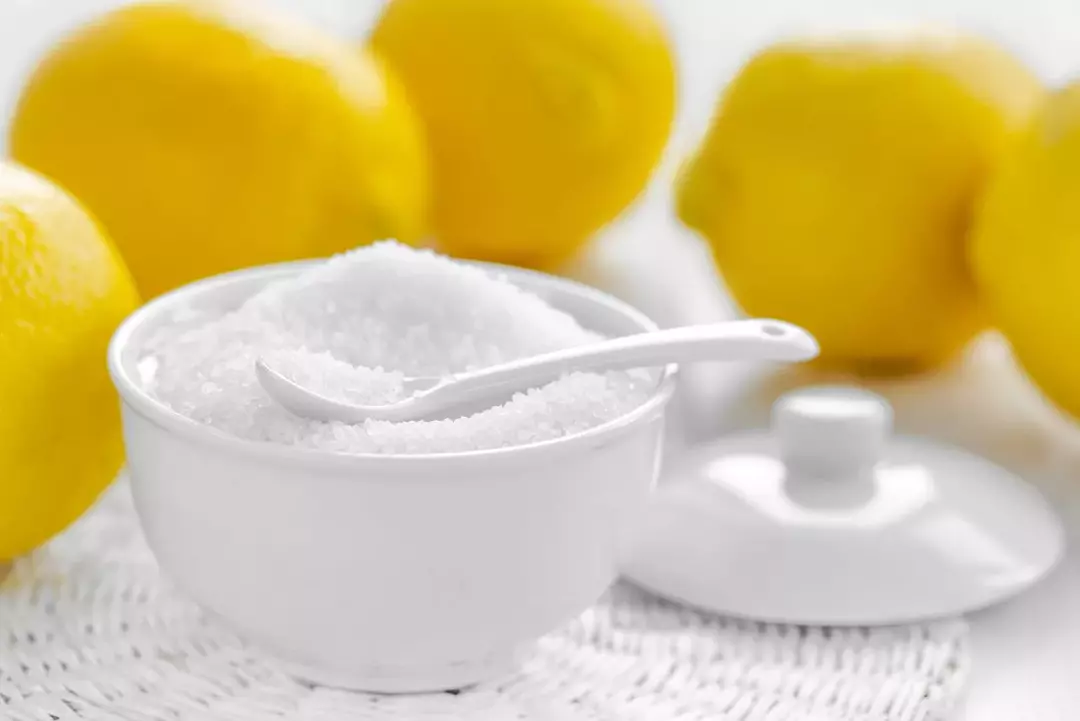
It is permissible to use citric acid or lemon slices.
Important! Only citric acid is needed - lemon juice will not work.
How to clean the pan from soot with household chemicals
Cleaning products have long been in the everyday life of the layman. They work effectively, quickly, and are easy to use. They are easy to find at any hardware store. When choosing, you must carefully read the instructions: the area of \u200b\u200bits application, otherwise the pan may be damaged. They are able to remove carbon deposits in 10-20 minutes, especially heavy pollution will have to be left overnight by putting a plastic bag on the dishes.
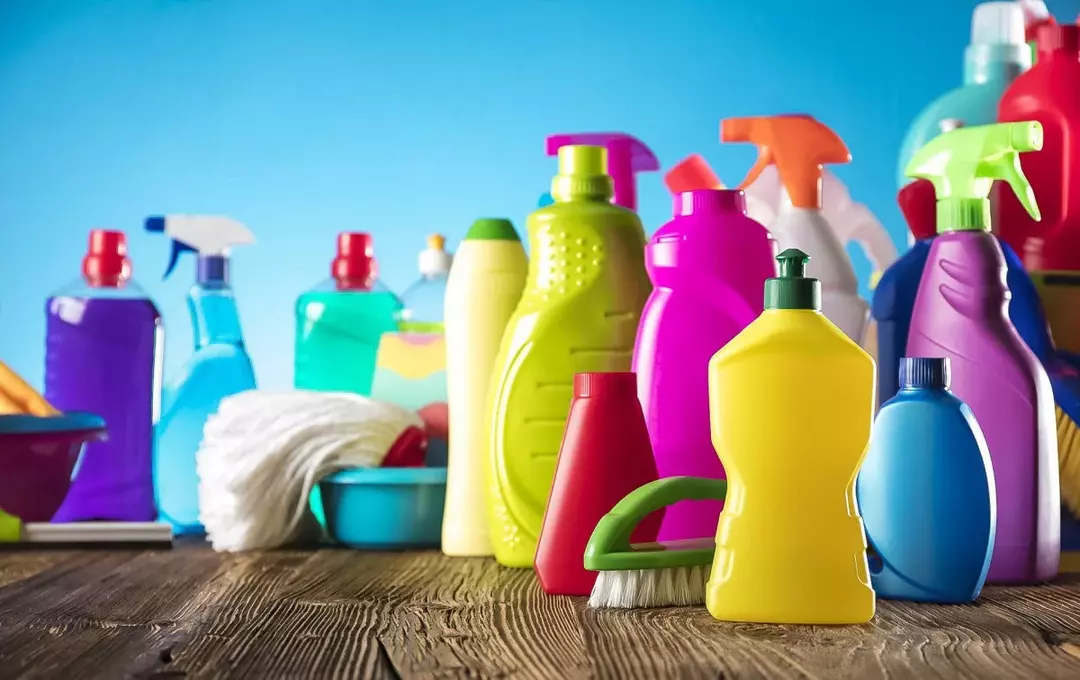
Some prefer to choose special products that fight professionally with any pollution.
Attention! It is necessary to work, protecting yourself from burns of the skin with gloves, and ventilate the room.
How to quickly clean an old pan from fat
The fastest substances for removing old burnt fat are household chemicals. Most of the above methods eliminate burnt fat deposits in a couple of hours.
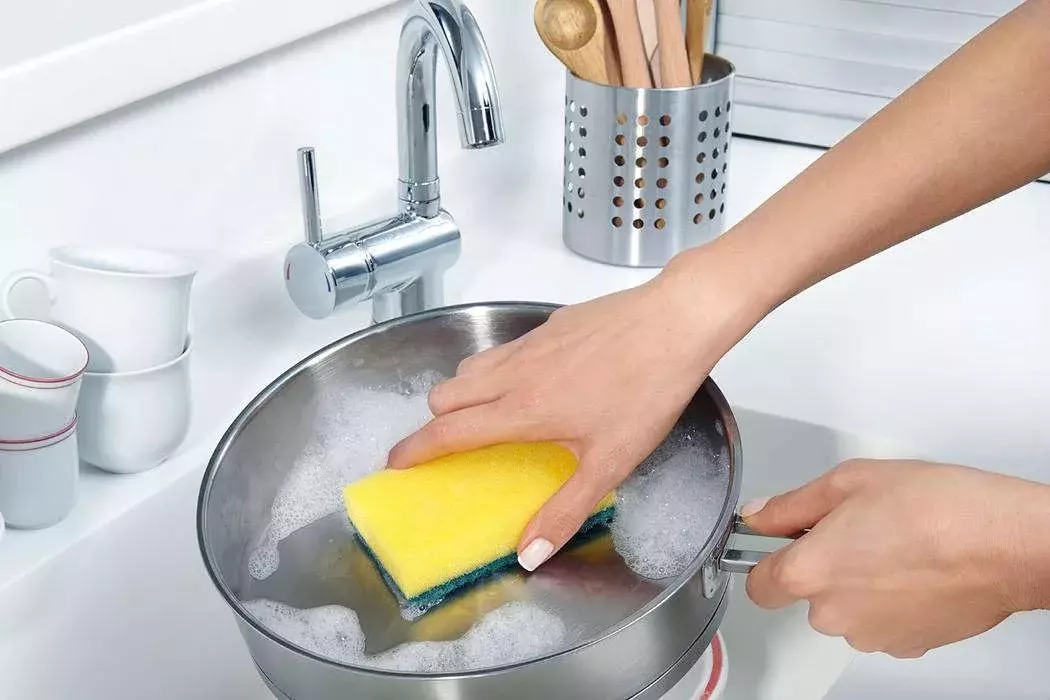
Cleaning dishes in this case occurs with minimal physical effort.
How to remove browning on a pan
- The yellow, dark plaque formed inside it is removed by boiling the onion, pear. They are cut into pieces and boiled for half an hour.
- At night, whey is placed in a bowl. Rinse the pot in the morning.
- Remove persistent plaque with a solution of chlorine (a spoonful per liter of water, half an hour).
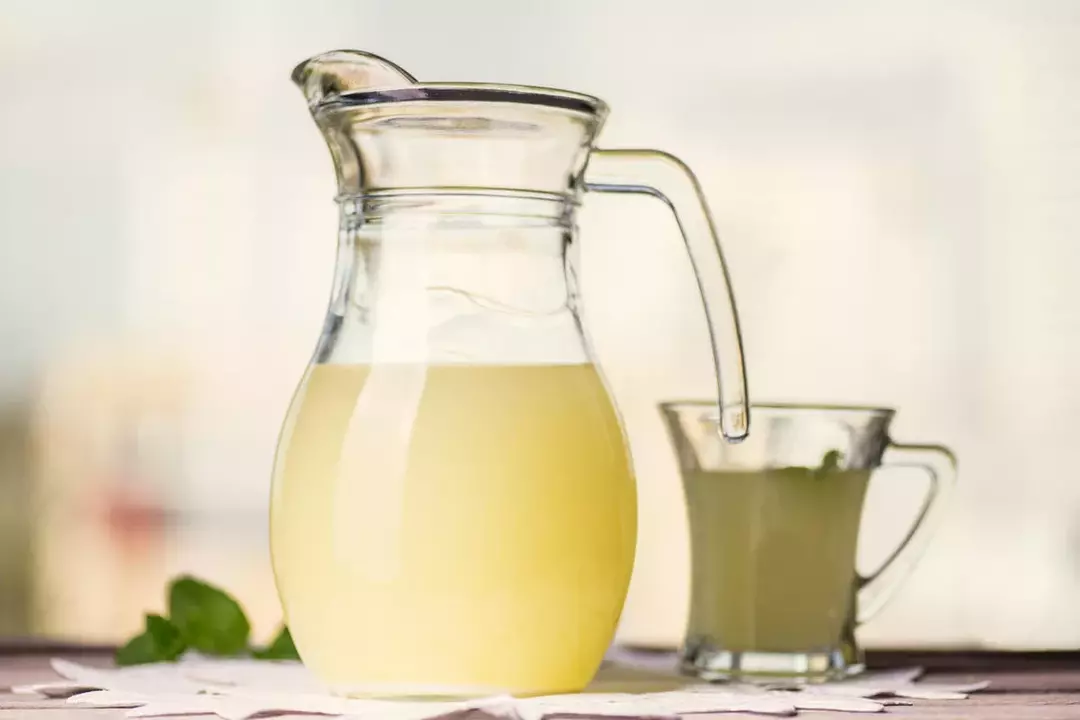
If the cookware has heavily sooted areas, the acids contained in the whey will help clean the pan.
How to clean heavily smoked sides and bottom of a pot
The massive soot of the walls and bottom is eliminated by increasing the duration of boiling with the above chemicals, as well as the reuse of cleaning technologies, the use of several ways.
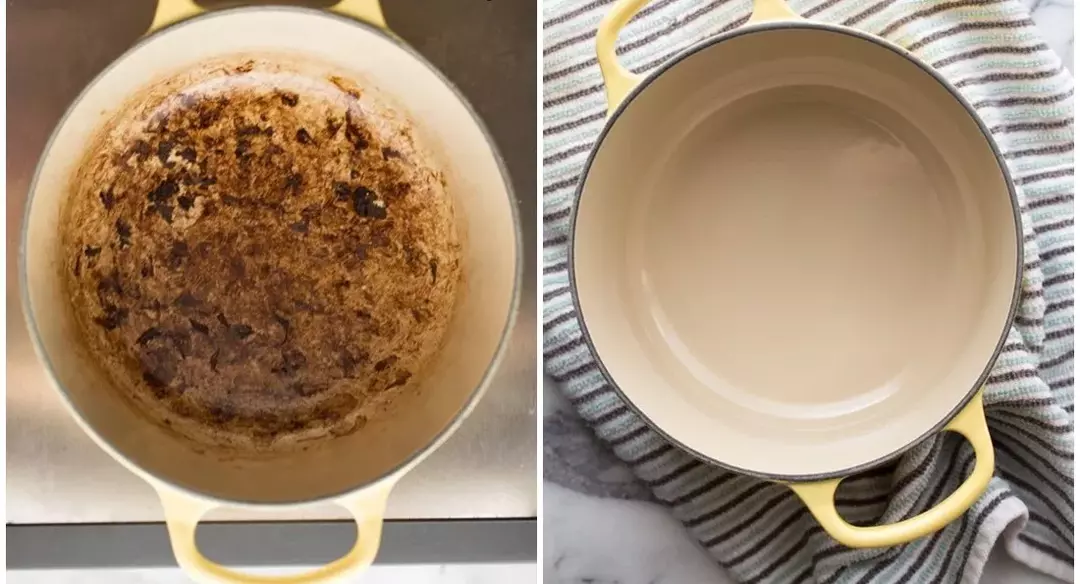
For safety reasons, rubber gloves should be used.
Features of cleaning pans from different materials
stainless steel
The walls of stainless steel pans are very sensitive to mechanical damage. Chromium (as part of the alloy), having bonded with atmospheric oxygen, forms a protective film on its metal surface, damage to the protection accelerates the corrosion of the metal.

Stainless steel pans must not be exposed to salt and its solutions.
Basic Rules:
- Forget about metal sponges and scrapers, abrasive powders, cleaners containing small particles - there is a high risk of scratches of various depths.
- Clean the dishes regularly, without a dishwasher.
- After removing dirt, wipe the product dry (to avoid stains on the surface).
- Clean with point movements (not circular).
Enamelware
Washing enameled utensils should not be postponed until later, cleaning is done with soft sponges and without coarse substances - from damage to the coating. Any temperature difference must be avoided.
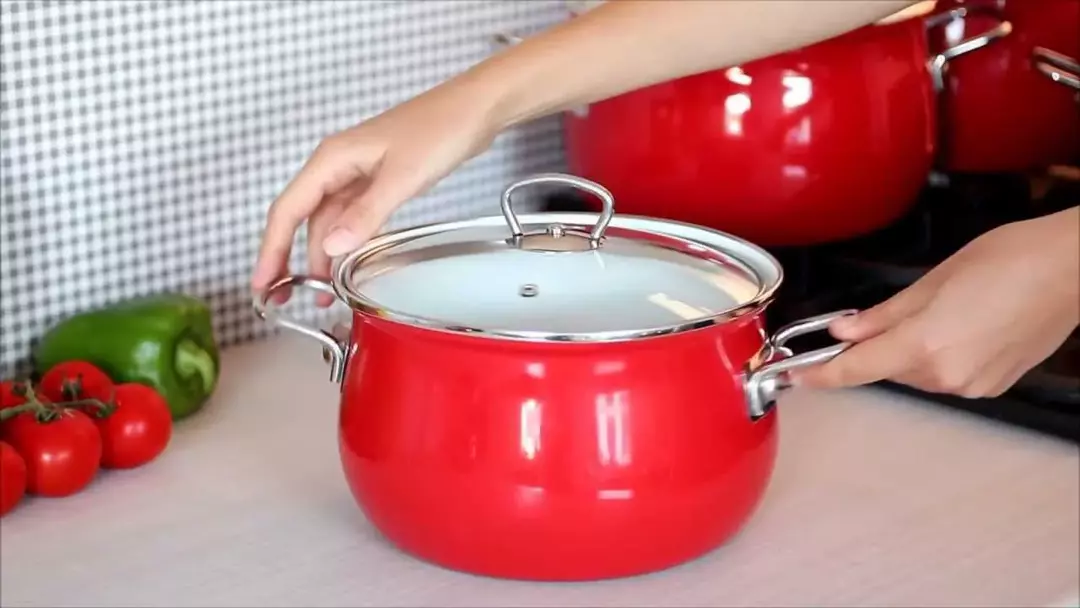
The enameled coating does not tolerate aggressive effects, so it cannot be treated with citric and acetic acid.
Aluminum saucepan
- It is forbidden to clean aluminum utensils with acids, they form compounds with aluminum that are dangerous for the human body.
- It is advisable to wash it only after cooling, in order to avoid deformation of the metal under the influence of water.
- Dirt is cleaned with a soft cloth, wooden spatula.
- Detergents suitable for glass, ceramic products.
- You can pre-soak the dishes by applying soap for a couple of minutes.
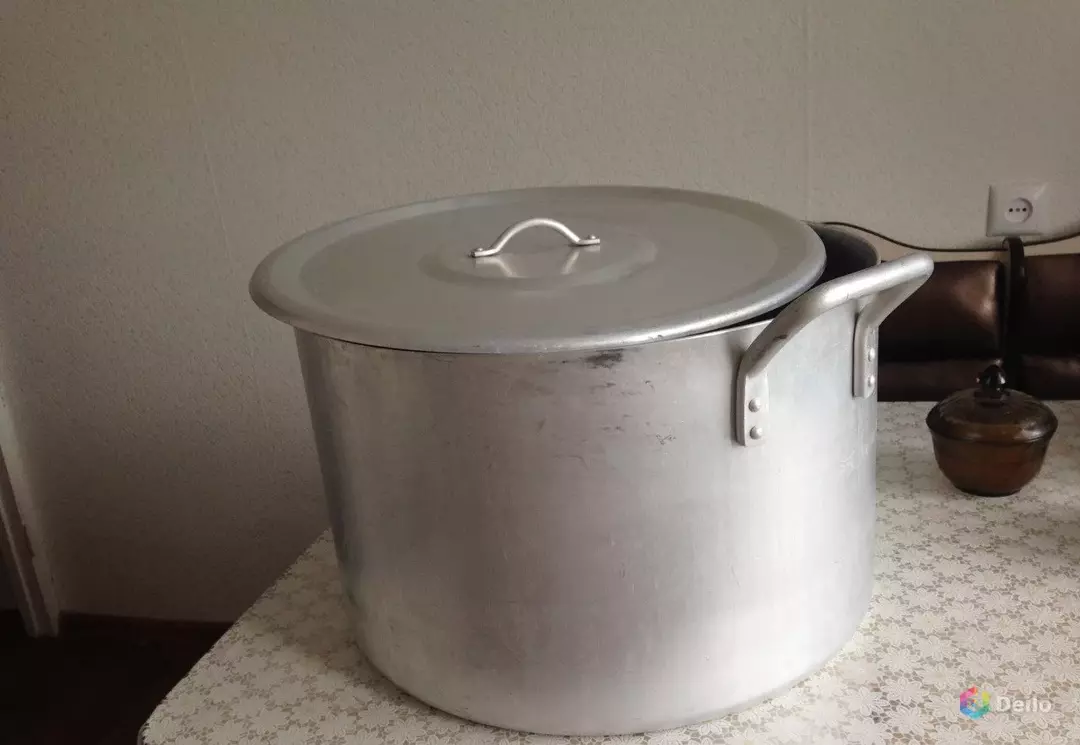
The use of baking soda as a cleaning agent is not recommended for aluminum pans.
Teflon coated saucepan
It is necessary to boil water in it, adding a couple of drops of detergent. Teflon coating is extremely susceptible to aggressive chemicals, hard brushes and abrasive substances.
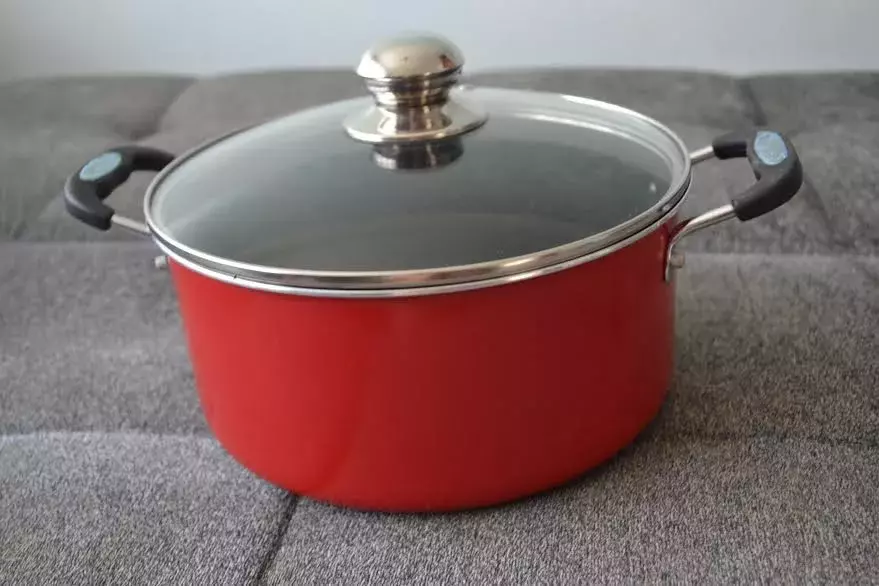
Pots and pans coated with Teflon are resistant to corrosion, but the coating itself is easily destroyed.
How to properly clean pots and restore their original shine
- Pour kefir into the pan for several hours.
- Treat the surface with cucumber pickle, vinegar 9%, leave for a couple of hours.
- Boil the onion in a container (30 minutes).
- Rub with an apple slice.
- Spread with tooth powder for a couple of hours.
- Rub with an eraser.

If the dishes have more serious and long-term soiling, dry bleach powder will help clean the outside.
Dish care and fire prevention
- Start cooking by setting the timer on the stove.
- There is no timer - set a reminder on your phone.
- Wash kitchen utensils regularly and without delay.
- Do not use a dishwasher or hard brushes.
- After washing, wipe dry with something.
- Harden the enamel before use (boil water in a new pan)
- Do not cook food in scratched products.
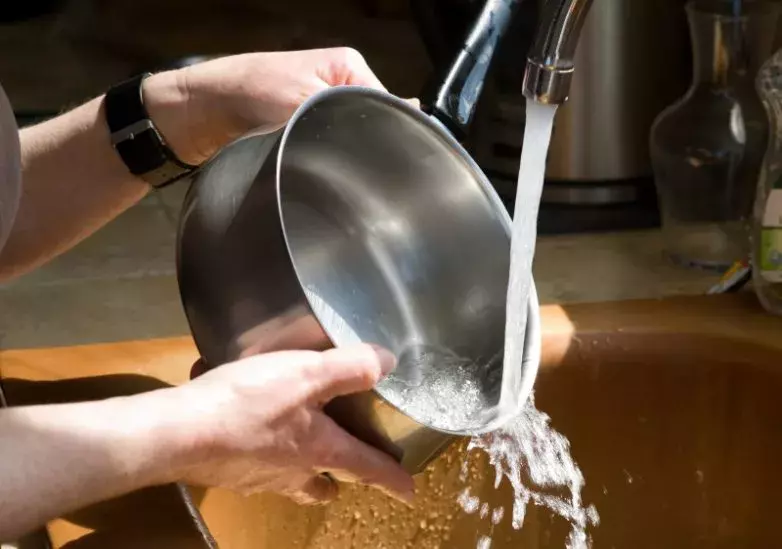
If used correctly, cleaned in time and properly stored pots, then modern housewives can pass them on to future generations.
In general, the choice of a method for cleaning a pan from soot and burnt food is determined by the properties of its metal, enamel coating, the presence of improvised chemical reagents, allergies to them, the extent of contamination this utensil.
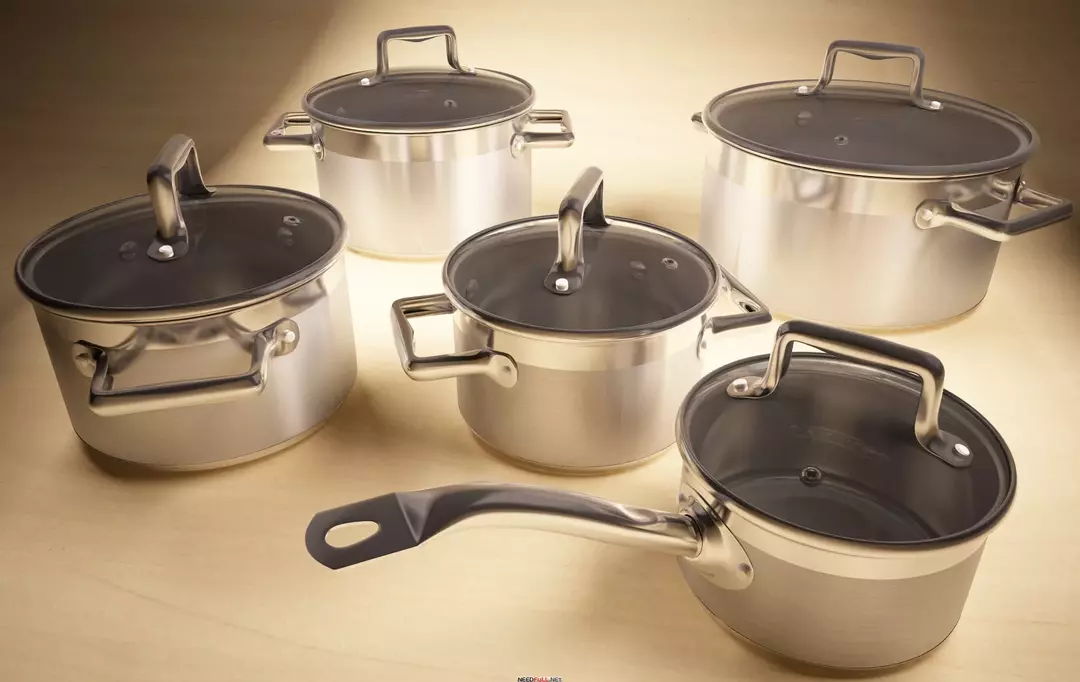
In order for the dishes to be used for a long time, while maintaining a decent appearance, there is a main rule - any contamination must be removed immediately.
VIDEO: How to effectively clean the pans from soot and fat.
PreviousTablewareHow to clean the pan from fat and soot
NextTablewareHow to measure the diameter of a frying pan
